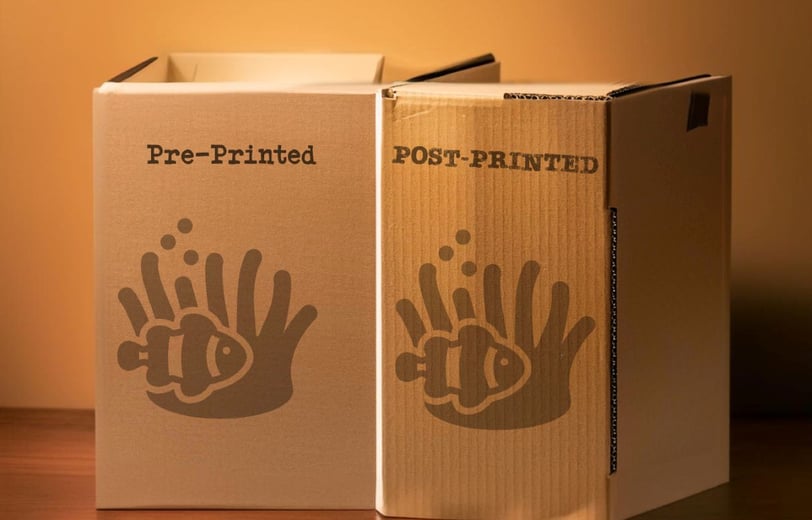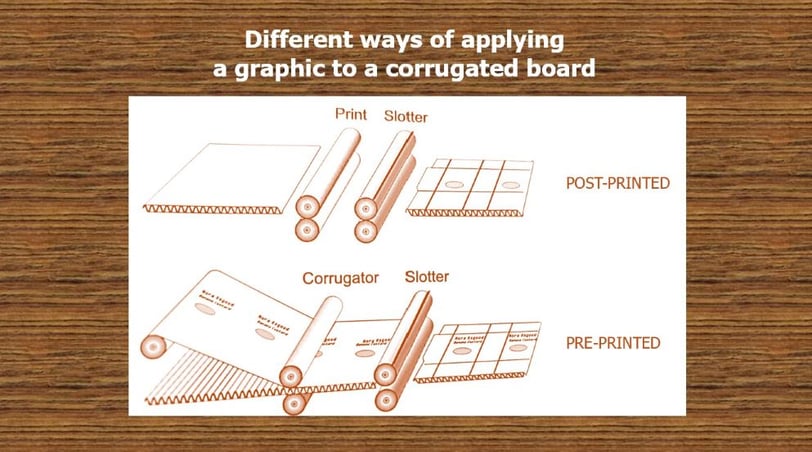Get a design guide with more than 200 box die-cut designs that will help spark ideas to reduce the cost of paper boxes, including promotional materials for you for FREE!
Pre-printed vs. Post-printed Packaging: Unveiling the Distinctions that Matter
Learn the key differences between pre-printed and post-printed packaging. Discover the advantages, limitations, and how to choose the right process for your needs.
By June Jarupuk
2 min read


Table of Contents
Pre-printed Packaging: Printing Before Formation: The process & Advantages.
Post-printed Packaging: Printing After Formation: The process & Advantages.
Top 3 Common Problems with Post-printed Packaging.
Key Takeaways.
In the world of paper packaging, the choice between pre-printed and post-printed processes can significantly impact the final product's appearance, quality, and cost-effectiveness. Understanding these differences is crucial for making informed decisions that align with your packaging needs.
Pre-printed Packaging: Printing Before Formation.
The Process: In pre-printed packaging, the design is printed directly onto the paperboard or corrugated material before it is converted into the final packaging structure.
Advantages:
Superior Quality: Pre-printing often yields sharper, more vibrant graphics and text due to the smoother printing surface. Reduced risk of flute compression, maintaining package strength.
High-Speed Production: Ideal for large print runs, pre-printing allows for efficient and rapid production.
Cost-Effectiveness: Pre-printing can be a cost-effective option, particularly for large quantities, as it eliminates the need for separate printing after box formation.
Versatility: Pre-printing is suitable for a wide range of designs and colors.
Pre-printing as an Offset Printing Alternative: In some cases, pre-printing can serve as a cost-effective substitute for offset printing, especially for high-volume projects.
Post-printed Packaging: Printing After Formation.
The Process: Post-printed packaging involves printing directly onto the formed corrugated box.
Advantages:
Flexibility: Post-printing offers greater flexibility for last-minute design changes or variable data printing.
Short Runs: Post-printing can be a good choice for smaller print runs or projects with frequent design updates.
Specialty Effects: Post-printing can accommodate certain specialty printing effects that may not be feasible with pre-printing.
Top 3 Common Problems with Post-printed Packaging.
Flute Compression & Reduced Strength: Printing on a formed corrugated box can compress the flutes, potentially weakening the structural integrity of the packaging.
Visible Flutes: Post-printing may result in visible flutes on the printed surface, affecting the smoothness and overall aesthetic appeal. Heavier paper grammage can enhance the smoothness of post-printed packaging, however, this comes at the cost of increased packaging weight.
Registration Challenges: Achieving precise registration and alignment of colors can be more challenging in post-printing, particularly on larger boxes.
Key Takeaways
Pre-printing offers superior print quality, efficiency, and cost-effectiveness for large runs.
Post-printing provides flexibility for short runs and last-minute design changes.
Post-printing can lead to flute compression, visible flutes, and registration challenges.
Consider factors like print run size, design complexity, and desired quality when choosing between pre-printed and post-printed packaging.
By carefully evaluating these factors and understanding the unique benefits and drawbacks of each process, the right choice will not only enhance the visual appeal of your products but also protect them throughout the supply chain.
Note: At Unique Paper Packaging, we specialize in pre-printed packaging solutions, leveraging its advantages to deliver exceptional results for our clients.


Specializing in eco-friendly and cost-effective packaging solutions for businesses worldwide.
Partner with us. Let's connect!
thaweesak.bun@gmail.com
© 2024. All rights reserved.
